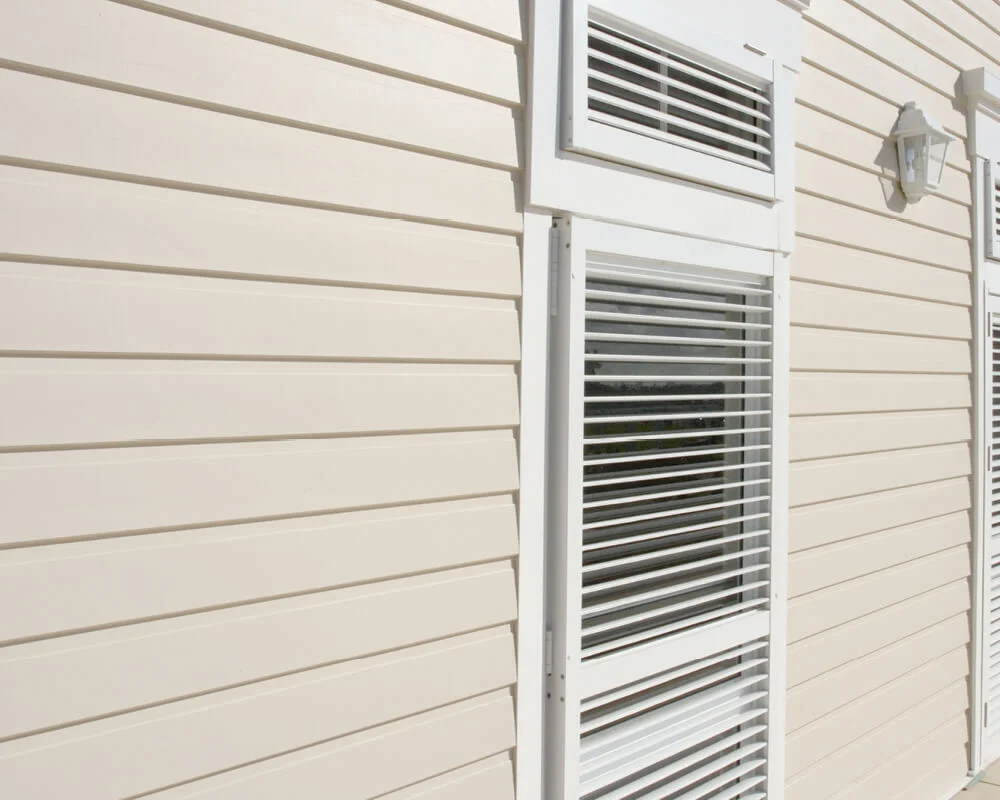Weatherboard cladding offers you exceptional insulation and energy efficiency advantages. It creates a thermal barrier that reduces heat loss in winter and keeps your home cooler in summer. This means you spend less on energy bills, often seeing savings up to 30%. Plus, its sound insulation properties help reduce outside noise, giving you a peaceful living environment. With proper installation, including moisture management, you enhance your home’s durability and comfort. Investing in weatherboard cladding not only pays off financially but also contributes to a sustainable future. There’s plenty more to discover about its benefits and installation tips.
Understanding Weatherboard Cladding
Weatherboard cladding is a popular exterior choice for homes, as it combines durability with an appealing aesthetic that enhances your property’s character. You can choose from various exterior weatherboards for your new home, such as timber, vinyl, or fiber cement, each offering unique benefits, such as low maintenance or increased insulation. When selecting the right material, consider your home’s style and local climate.
Proper installation techniques are vital for guaranteeing longevity and performance. You’ll want to confirm boards are correctly aligned and securely fastened to prevent gaps that can lead to water damage. Additionally, applying a protective finish can further enhance the weatherboard’s durability.
Insulation Properties Explained
When it comes to insulation, weatherboard cladding offers impressive thermal resistance, helping keep your home comfortable year-round.
You’ll also appreciate its sound insulation qualities, which reduce noise from the outside.
This combination makes it a smart choice for enhancing both energy efficiency and tranquility in your living space.

Thermal Resistance Benefits
Insulating properties of weatherboard cladding greatly enhance your home’s energy efficiency by reducing heat loss in winter and keeping it cool in summer. One key benefit is its ability to minimize thermal bridging, which occurs when heat flows through less insulated areas of your walls.
By creating a continuous insulation layer, weatherboard cladding helps maintain consistent indoor temperatures, ultimately lowering your energy bills.
Additionally, effective moisture management is essential for preventing mold and rot. Weatherboard cladding often includes features that allow for proper drainage and ventilation, ensuring moisture doesn’t become trapped.
This combination of thermal resistance and moisture control not only boosts comfort but also prolongs your home’s lifespan. With weatherboard cladding, you’re investing in a more energy-efficient and durable living space.
Sound Insulation Qualities
One notable advantage of weatherboard cladding is its sound insulation qualities, which help create a quieter and more comfortable living environment. The material’s design enhances its acoustic performance, effectively reducing external noise. This is particularly beneficial if you live in a busy area or near a noisy street.
By employing various soundproofing techniques, such as integrating insulation materials behind the cladding, you can further improve sound attenuation. Weatherboard cladding not only adds visual appeal to your home but also acts as a barrier against unwanted sounds, allowing you to enjoy peace and tranquility indoors.
When you choose weatherboard cladding, you’re opting for an effective solution to enhance your home’s overall comfort while maximizing its energy efficiency.
Energy Efficiency Benefits
Weatherboard cladding considerably enhances your home’s energy efficiency by providing a thermal barrier that reduces heat loss in winter and keeps the interior cool during summer. This means better climate control, which leads to significant energy conservation.
Here are three key benefits:
- Reduced Energy Consumption: By improving insulation, your heating and cooling systems work less, lowering your energy usage.
- Stable Indoor Temperatures: Weatherboard cladding helps maintain consistent temperatures, enhancing comfort without relying heavily on HVAC systems.
- Sustainability: Choosing energy-efficient materials supports eco-friendly practices, contributing to a healthier environment.
Cost Savings on Utilities
By enhancing energy efficiency, weatherboard cladding leads to significant cost savings on your utility bills.
When you choose this type of cladding, you’ll notice a reduction in your energy bills due to improved insulation. Less energy is required to heat or cool your home, meaning lower monthly costs.
Additionally, many regions offer utility rebates for homeowners who invest in energy-efficient upgrades. By taking advantage of these rebates, you can offset the initial investment in weatherboard cladding, further enhancing your savings.
Ultimately, the combination of reduced energy consumption and potential utility rebates makes weatherboard cladding a smart financial choice, allowing you to enjoy a more comfortable home while keeping your expenses in check.
Environmental Impact
When you choose weatherboard cladding, you’re making a positive impact on the environment.
It helps reduce your carbon footprint through energy-efficient properties and sustainable material choices.
Reduced Carbon Footprint
Choosing weatherboard cladding can considerably lower your home’s carbon footprint due to its sustainable materials and energy-efficient properties. By opting for this cladding, you’ll benefit from effective carbon offsetting strategies that contribute to environmental health.
Here are three key points to evaluate:
- Reduced Energy Consumption: Weatherboard cladding enhances insulation, minimizing the energy needed for heating and cooling.
- Sustainable Materials: Many weatherboard options are sourced from responsibly managed forests, ensuring a lower environmental impact.
- Lifecycle Assessment: The lifecycle assessment of weatherboard cladding often shows a lower carbon output compared to other building materials, making it a smart choice for eco-conscious homeowners.
Sustainable Material Choices
Weatherboard cladding not only boosts energy efficiency but also offers a variety of sustainable material options that considerably reduce environmental impact. You can choose from eco-friendly options like reclaimed wood, bamboo, or recycled materials, which help conserve resources and minimize waste. By opting for these materials, you’re making a conscious choice that supports sustainable practices.
When it comes to material sourcing, look for suppliers who prioritize responsible logging and ethical manufacturing processes. This guarantees that your cladding contributes to a healthier planet.
Plus, sustainable weatherboard cladding enhances your home’s aesthetic appeal while promoting energy efficiency. By selecting materials wisely, you’re not just investing in your property’s value; you’re also playing a part in protecting the environment for future generations.
